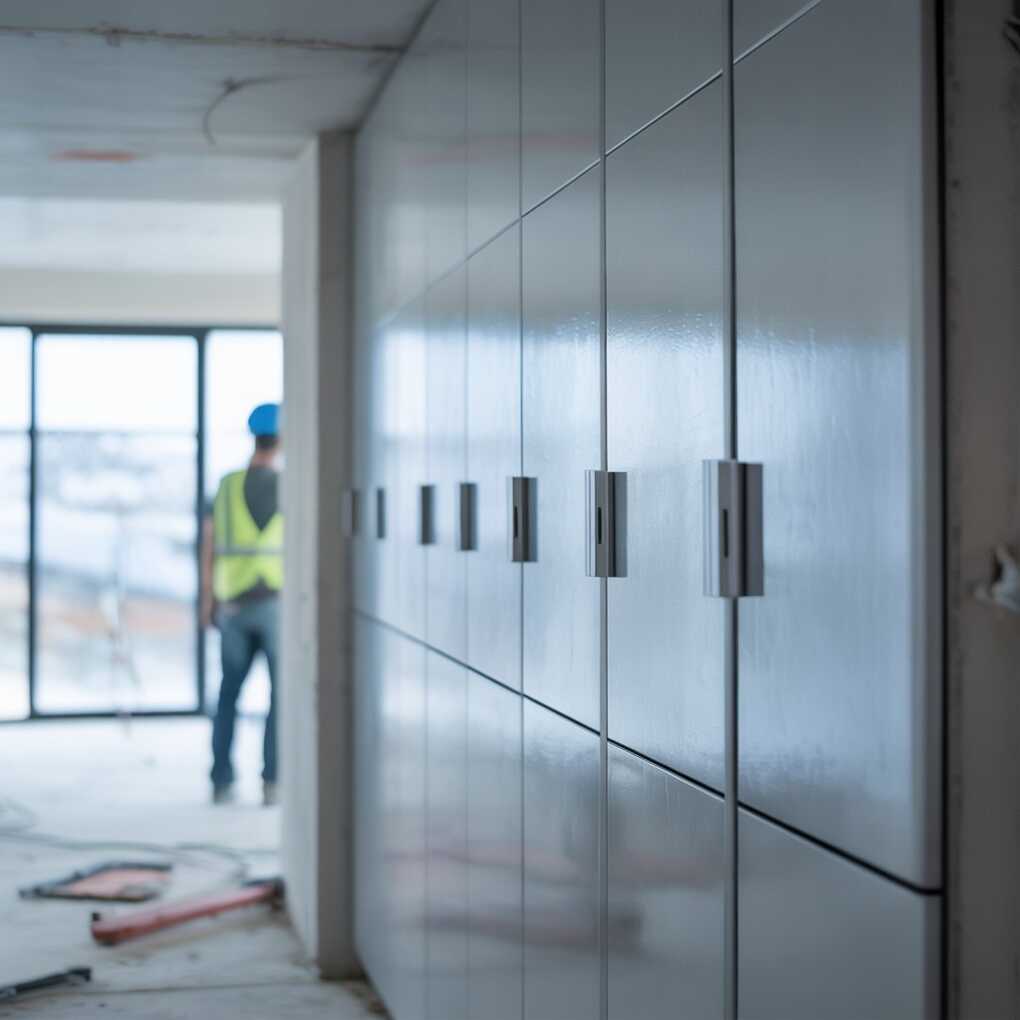For builders and construction professionals, every decision, from foundation to finish, affects a project’s long-term success.
While easy to overlook, metal access panels and other access solutions play a big role in the long-term functionality of commercial and residential buildings. They help technicians access and maintain important systems like plumbing valves, HVAC ducts, and electrical wiring.
When installed precisely, these panels offer a blend of practicality, efficiency, and aesthetic integration in any structure.

The Purpose of Access Panels in Construction
An access panel provides cover to a wall, ceiling, or floor opening, allowing easy access to important systems. These include plumbing, electrical wiring, HVAC ductwork, and communication lines.
Routine inspections, maintenance, and repairs become difficult without designated access points.
By specifying metal access panel locations in the design stage and installing them during the earlier construction phase, professionals can:
- Meet building code requirements.
- Ensure future maintenance is faster, cleaner, and less expensive.
- Facilitate routine inspections
- Make essential systems accessible without ruining the aesthetic.
Benefits for Both Residential and Commercial Spaces
Incorporating access panels in buildings positively impacts residential and commercial establishments alike. Some benefits include:
Saves Costs and Time
Imagine a burst pipe behind a tiled shower wall in a residential bathroom or a malfunctioning HVAC damper concealed within a drywall ceiling in a commercial office. Without an access panel, the immediate solution is demolition.
This means breaking through finished surfaces, incurring significant repair costs, material replacement, and labor costs.
With an access panel, the process becomes easy: open the panel, address the issue, and close it. For contractors, this translates to fewer callbacks, saved time, and lower labor costs. For building owners, it’s a long-term investment in reduced operational expenses.
Enhances Aesthetics
One of the most common misconceptions about access panels is that they are unsightly. Modern metal access panels are designed with aesthetics in mind. Many come with flush, paintable surfaces that seamlessly blend into the surrounding wall or ceiling.
Access panels can fit any design, from drywall options that can be textured and painted to minimalist designs with concealed hinges. This allows for clean lines and continuous surfaces, preserving a space’s intended aesthetic without compromising functionality.
Simplifies Repairs and Maintenance
Instead of guesswork and invasive searching, access doors and panels allow technicians to locate and address issues quickly. This means:
- Technicians identify problems faster, leading to quicker resolutions.
- Repairs can be done without unnecessary, extensive demolition.
- Routine inspections and compliance with building codes become straightforward.
This ease of access translates into less downtime for commercial operations and less disruption for residents.
Adapts to Various Designs and Finishes
Access panels are largely versatile. They come in different materials and finishes, and fit residential, commercial, and industrial applications, whether a project calls for a modern, minimalistic aesthetic, a classical look, or a complex industrial design.
Most have paintable surfaces, concealed hinges, and recessed panels that can hold different finishing materials, from tiles to carpets. This adaptability ensures the doors remain functional and beautiful.
Adds Lasting Value and Convenience
Ultimately, including access panels adds tangible and intangible value to a property. For homeowners, it’s the peace of mind knowing that future repairs will be less disruptive and costly.
For commercial property owners, it translates to lower operating costs, increased tenant satisfaction, and enhanced longevity of building systems.
This long-term convenience and efficiency contribute to any property’s overall appeal and market value.
Access Door Material and Style Options
Access panels are versatile, available in a wide array of materials and styles, ensuring a perfect fit for every application.
- Metal Access Panels: Made primarily of aluminum and steel, metal access panels are highly durable and perform well in high-traffic commercial environments. They can be powder-coated to match specific color schemes or come in stainless steel for hygienic applications, like in kitchens or laboratories.
- Drywall Access Panels: These panels typically feature a gypsum drywall infill that can be taped, jointed, and painted, making them almost invisible once installed.
- Fire-Rated Access Panels: These panels are crucial for maintaining compartmentation in fire-rated walls and ceilings. They are designed to resist the spread of fire for a specified duration.
- Acoustic Access Panels: Acoustic panels help maintain the integrity of sound insulation in spaces where sound control is important.
- Security Access Panels: These are equipped with robust locking mechanisms and suited for sensitive areas that need to be restricted.
- Plastic Access Panels: Lightweight, cost-effective alternatives to metal, often used in less demanding environments where aesthetics and humidity resistance are priorities.
This extensive range means contractors can select the exact panel to meet each project’s specific performance, aesthetic, and regulatory requirements.
Conclusion
Access panels, especially the more durable metal ones, are no longer an afterthought in construction. They’re must-have components that enhance utility, aesthetics, and property value across residential and commercial projects.
They simplify maintenance, reduce repair costs, and offer smooth design finishes, whether building a custom home or managing a commercial building. Access panels are a seemingly small detail that can make a big difference on the job site and in the building long-term.
